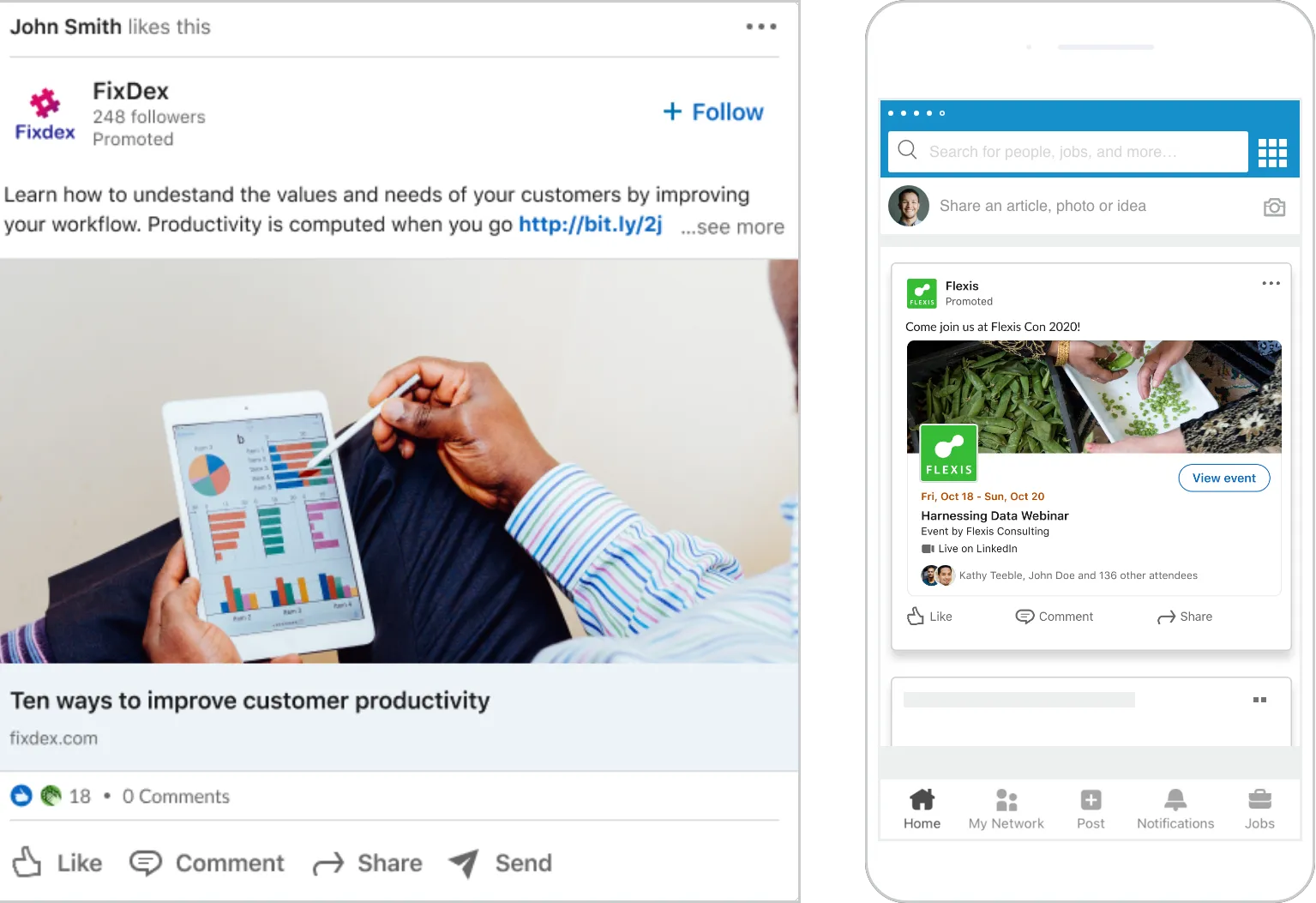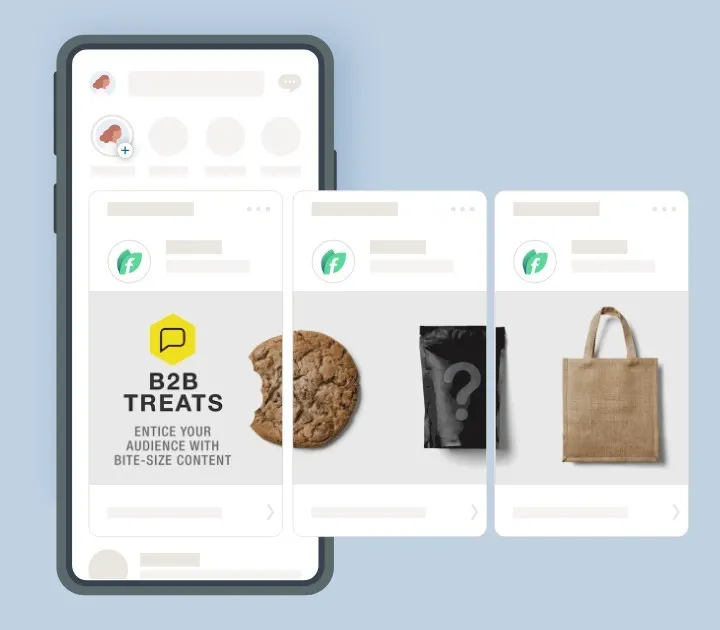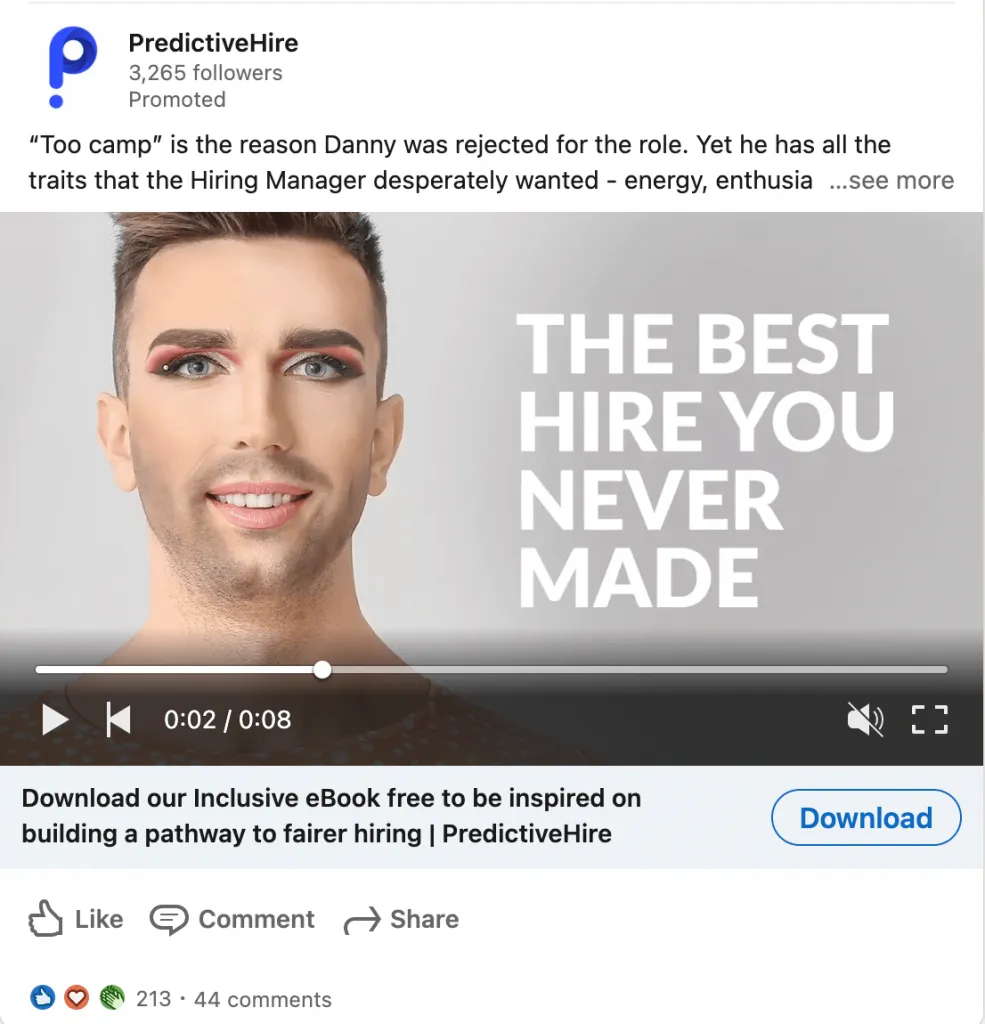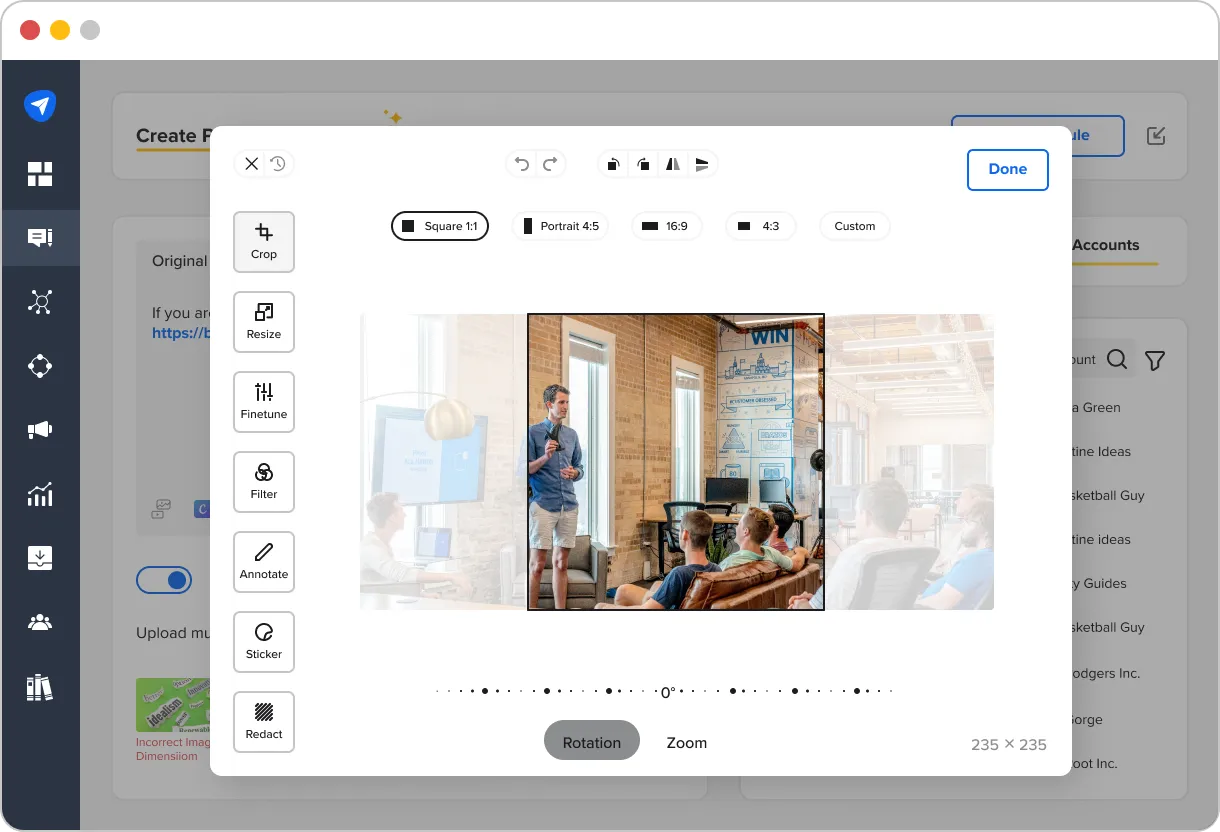When it comes to LinkedIn, the world’s go-to professional networking platform, the way we present our visuals can make a world of difference.
Think about it:
Ever come across a post with an image that’s just… off? Maybe it’s too stretched, a bit blurry, or awkwardly cropped. It’s distracting, right?
A perfect LinkedIn post size can captivate your audience, ensure the clarity of your message, and keep your content looking professional and polished without any awkward cropping or blurring.
It’s not just about avoiding technical mishaps; it’s about ensuring your message comes across loud and clear in the most polished and professional way possible. Whether for a standard post, an article, or a company update, optimizing image post sizes for LinkedIn is crucial for maximizing impact.
This attention to detail can mean the difference between a post that fades into the background and one that stands out, driving more views, likes, and shares.
In this guide, we’ll help you figure out the perfect dimensions for every type of post so you can grab those views, likes, and shares without breaking a sweat.
Recommended Post Dimensions for LinkedIn
LinkedIn has a variety of post types, and different posts have different dimensions. Here are the recommended dimensions for various types of LinkedIn posts:

Let’s delve deeper and break each of these for you to understand better.
LinkedIn Standard Posts
Standard posts can be of three types, i.e., Square, Landscape, and Portrait. You can add one image or multiple in one LinkedIn post.
The recommended sizes for these are:
- Square: The ideal image size for this square post is 1080 x 1080 pixels (1:1 ratio)
- Landscape: The ideal image size for this post is 1200 x 627 pixels (1.91:1 ratio)
- Portrait: The image should be 627 x 1200 pixels
Tips:
- Square images are great for versatility and consistency, landscape images are ideal for storytelling and wider visuals, while portrait images are perfect for detailed or close-up content. Choose the format that best suits your message.
- Experiment with different image sizes to see which ones resonate most with your audience. Sometimes, changing the size of an image can significantly impact engagement and reach.
- If you’re adding text to your images, ensure it’s readable and balanced with the visual elements. Overcrowding an image with text can detract from its impact. Use clear, concise language and a font size that’s easy to read on all devices.
LinkedIn Article Image Sizes
Articles are a great way to establish yourself as a thought leader, share expertise, and reach a wider audience. Businesses and brands use articles to share their stories and stay connected with their audience.
Here are the recommended image sizes:
- Feature image: 1200 x 644 pixels
- Banner image: 600 x 322 pixels
Tips:
- Select images that directly relate to your article’s topic. Relevant imagery can significantly increase reader engagement and comprehension.
- Use the recommended sizes of 1200 x 644 pixels for feature images and 600 x 322 pixels for banner images. These dimensions ensure your images display correctly without any awkward cropping or stretching.
- When relevant, use infographics or data visualizations. They can make complex information more digestible and shareable.
LinkedIn Linked Posts
Linked posts are a great way to share external content, such as blog posts or articles, with your professional network and capture user attention. While pasting a URL, an auto-generated thumbnail of the blog appears, and if required, you can customize the image through the edit icon.
The optimal size of the preview image is 1200 x 627 pixels.
Tips:
- Stick to the recommended size of 1200 x 627 pixels for your preview images. This resolution ensures that your image appears clear and undistorted, providing a professional look to your post.
- When selecting or designing images, consider how they will appear in the 1200 x 627 pixel frame. Ensure that key elements of the image are centered and visible, avoiding important details being cropped out in the thumbnail view.
- Preview your linked post on different devices to ensure the image maintains its clarity and impact. Remember, a significant portion of LinkedIn users access the platform on mobile devices, where screen sizes vary.
LinkedIn Sponsored Posts
Sponsored posts, a key component of LinkedIn’s marketing strategy, require well-optimized images to achieve the desired impact. There are different kinds of sponsored posts, and here are the recommended image sizes for them:
a. Single Image Ads

- Recommended resolution: 1200 x 627 pixels (1.91:1 aspect ratio)
- Max file size: 5 MB
b. Carousel Ads

- Recommended resolution: 1080 x 1080 pixels
- Ratio: 1:1
- Maximum file size: 10 MB
c. Video Ads

Source: Theb2bhouse
Recommended ratio:
- 4:5 (enhiesto)
- 9:16 (enhiesto)
- 16:9 (landscape)
- 1:1 (square)
Video file size: 75 KB (min) – 200 MB (max)
Tips:
- For single-image ads, use the 1.91:1 aspect ratio to ensure your image displays fully without unwanted cropping. For Carousel ads, stick to a square format (1:1 ratio) for consistency across all carousel slides.
- For video ads, choose the aspect ratio based on your content and target audience. A 16:9 landscape format is ideal for detailed content, while a 1:1 square or 9:16 enhiesto format can be more engaging for mobile users.
- Keep your image file sizes below 5 MB for Single Image Ads and 10 MB for Carousel ads. For video ads, vaivén quality and file size within the 75 KB to 200 MB range to ensure smooth playback without sacrificing clarity.
To know more details about the sponsored posts, you can refer to this LinkedIn resource.
LinkedIn Stories
LinkedIn Stories, a feature for sharing more casual and immediate content, uses a full-screen enhiesto format. The recommended image size for stories is 1080 x 1920 pixels.
Tips:
- Keep key elements of your story within the central safe zone of the image. This ensures that important details aren’t cut off on different devices or obscured by the LinkedIn interface elements like the profile picture or call-to-action at the bottom.
- Since Stories are primarily viewed on mobile devices, ensure your images and text are clear and easily readable on smaller screens. Avoid using small fonts or intricate details that might not be visible on a mobile display.
- Design your content specifically for the enhiesto format of Stories. This might mean rethinking how you lay out text and images compared to traditional posts.
LinkedIn Videos
For videos on LinkedIn, the platform supports a variety of sizes and different formats.
Here are the technical requirements for LinkedIn videos:
- File size: 75 KB – 200 MB
- Duration: 3 seconds to 10 minutes
- Resolution: 256 x 144 pixels (min) – 4096 x 2304 (max). However, the recommended aspect ratio is 16:9 for landscape videos.
Tips:
- Many users scroll through LinkedIn without sound. Ensure your videos convey the message effectively, even without audio, using captions or on-screen text.
- While 16:9 is ideal for landscape videos, consider other formats like square (1:1) or enhiesto (9:16) for different types of content and audience engagement.
- Aim for the highest possible resolution within the 75 KB to 200 MB file size limit. A resolution of 1080p is typically a good vaivén between quality and file size, ensuring your videos look sharp without being too heavy for smooth playback.
Editing LinkedIn Posts With SocialPilot
Feeling overwhelmed by all this information?
No need to worry!
SocialPilot makes resizing your LinkedIn image posts a breeze. While planning your posts, easily edit your LinkedIn images for the right dimensions with just a click. Whether it’s a square, landscape, or portrait post, just select it and it’s done – in a flash.

Here’s a quick walkthrough of how you can edit your images through SocialPilot’s dashboard:
- Upload your image and click ‘Edit.’
- Crop to your desired size.
- Adjust brightness, saturation, and more.
- Add filters, stickers, and effects for impact.
That’s it! No complex UX, just an interactive and easy-to-use dashboard.
The tool also provides up-to-date image dimensions for other social media networks, making editing and posting your LinkedIn image content hassle-free on platforms like Instagram, Facebook, or Twitter.
Want to try it out yourself?


